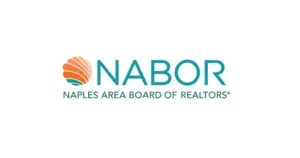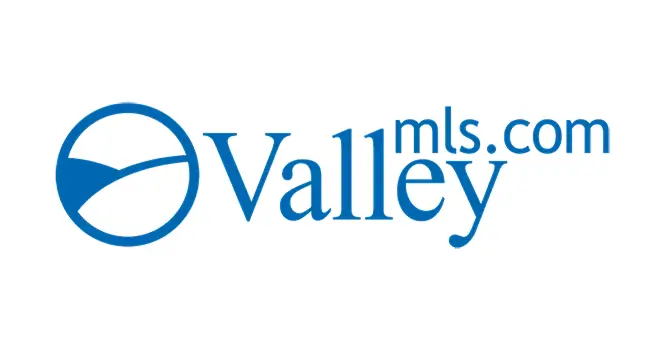If you’re a real estate professional in northern Alabama, you’ve probably heard of Valley MLS. This powerhouse multiple listing service has connected agents, brokers, and buyers across the region since 1967. Whether based in Huntsville, Decatur, or anywhere in the nine-county service area, Valley MLS (also known as North Alabama MLS or NALMLS) gives you access to thousands of listings and the tools you need to close more deals.
Let’s review everything you need to know about this regional MLS, from coverage areas to membership costs to the tech platforms that make it all work.
Where Valley MLS Operates
Valley MLS isn’t just a Huntsville thing anymore. The service area spans nine counties across northern Alabama, making it one of the largest MLSs in the state. Here’s the breakdown:
Madison County is the hub, covering Huntsville, Madison, Meridianville, New Market, Owens Cross Roads, and Triana. Here, you’ll find the biggest population and most suburban markets.
Limestone County is experiencing rapid growth, especially in Athens, Ardmore, Elkmont, Lester, Mooresville, and Tanner. The corridor west of Huntsville continues to attract new residents and developers.
Morgan County, along with Decatur, Hartselle, Priceville, and Trinity, brings industrial strength to the mix. The area south of the Tennessee River has a strong manufacturing presence.
Moving east, Jackson County covers Tennessee River valley communities like Bridgeport, Scottsboro, Skyline, Stevenson, and Woodville. DeKalb County includes mountain communities along Lookout Mountain, such as Fort Payne, Mentone, Rainsville, Fyffe, and Crossville.
Marshall County draws people to Lake Guntersville’s resort area, with cities like Albertville, Arab, Boaz, and Guntersville. Cherokee County marks the easternmost coverage point with Cedar Bluff, Centre, Collinsville, Gaylesville, Leesburg, Piedmont, and Sand Rock.
Rounding out the coverage, Etowah County sits along the Coosa River (Attalla, Gadsden, Glencoe, Hokes Bluff), while Lawrence County offers rural farmland in western North Alabama (Courtland, Hillsboro, Moulton).
The rules are clear: a property in one of these nine counties must be listed in Valley MLS. Properties outside this area? You can add them voluntarily if you hold a license in that state.
What’s exciting is the October 2025 data-share agreement with First Multiple Listing Service (FMLS) from Atlanta and Greater Alabama MLS (GALMLS). This partnership means your listings get exposure far beyond the traditional nine-county footprint.
Who’s Eligible to Join
Valley MLS isn’t exclusive, but it does have specific requirements. You’ll need three things to participate:
An active Alabama real estate license. If you’re licensed in another state, Alabama offers reciprocal licensing. You’ll complete a six-hour Alabama real estate law course and pass the state portion of the exam—no need to retake the entire test.
REALTOR® membership in a partner association. Valley MLS is jointly owned by five associations: Huntsville Area Association of REALTORS® (HAAR), Athens-Limestone Association of REALTORS®, Marshall County Board of REALTORS®, Morgan County Association of REALTORS®, and Northeast Alabama Association of REALTORS®. When you join HAAR (the most common entry point), you’re automatically enrolled in the Alabama Association of REALTORS® (AAR) and the National Association of REALTORS® (NAR).
Meeting the basic qualifications. You must be a U.S. citizen or permanent resident, at least 19 years old, with proof of residency in any U.S. state, and a high school diploma. No recent felony convictions allowed.
Principal brokers become “participants” in the MLS, while sales associates, non-principal brokers, and licensed or certified appraisers become “subscribers.” Even unlicensed administrative staff can get login credentials if they’re authorized by a participant and maintain confidentiality.
Here’s a money-saving tip: if your firm has licensees who won’t use the MLS, submit a “Certification of Non-MLS Use” to waive their subscription fees.
The Step-by-Step Joining Process
Getting into Valley MLS takes some planning, but the path is straightforward. Here’s what you’ll do:
Get your license. Complete a 60-hour pre-license course and pass the Alabama real estate exam. The pre-license course runs about $299-$329, and you’ll pay $75 per exam attempt. For out-of-state professionals, that six-hour Alabama law course gets you in the door.
Join a partner association. Submit your REALTOR® member application through HAAR’s website. The membership department will reach out to explain dues and fees. Remember, joining HAAR automatically gives you AAR and NAR membership plus MLS eligibility.
Complete orientation training. Every person who accesses Valley MLS must finish an orientation program within 60 days. This program lasts up to eight classroom hours and covers MLS rules, computer system training, and service etiquette. If you skip it, your access will be suspended until you complete the class.
Take the MLS Basic class. After getting access, you have 60 days to finish this four-hour course, which is mandatory for all participants and subscribers.
Submit your paperwork and fees. Fill out the MLS participation agreement, subscriber agreement, or any affiliate/appraiser applications as needed. Firms must designate a “Participant/Qualifying Broker” responsible for paying fees and ensuring everyone follows the rules. Unlicensed assistants sign a confidentiality agreement.
The orientation requirement is non-negotiable. Valley MLS takes training seriously and may require up to four additional hours during central system or policy changes.
What It Costs to Get Started
Let’s talk money. The exact fees vary slightly by association, but here’s what a new HAAR member typically pays in 2025:
- Pre-license course: $299-$329
- State exam: $75 per attempt
- Temporary licensing fees: $245 total (includes license fee, criminal records search, research/education, recovery fund, and fingerprints)
- One-time membership application: $900 (covers HAAR, AAR, and Valley MLS)
- Annual association dues: $568 (paid each January)
- Valley MLS service fee: $150 per quarter
You’ll also need a Supra lockbox ($125 each) and an electronic key (roughly $20/month). Budget around $169 for post-licensing courses, though MLS orientation comes with your membership.
The 2025 rules specify additional fees: a $400 application fee and a $500 initial firm membership. Each participant and subscriber pays quarterly dues. If you miss a payment, you’ll face a $50 late fee, plus suspension if you don’t resolve the issue within 30 days.
Remember the hidden costs, such as business cards, advertising, and errors-and-omissions insurance, which add up quickly when you’re starting out.
Property Types You Can List
Valley MLS accepts a wide variety of properties, but there are rules. All listings must use Exclusive Right-to-Sell or Exclusive Agency agreements. Open listings and net listings are not allowed.
Residential properties include:
- Single-family detached homes
- Condominiums and townhouses
- Manufactured homes (including those on permanent foundations)
- Farms with homes
- Deeded RV/travel trailers affixed to land
Land and lots cover acreage, deeded RV lots, and lots sold at auction (by licensed auctioneers who are Valley MLS members).
Multi-family ranges from duplexes and triplexes to large apartment buildings. Rentals include houses, apartments, condos, duplexes, manufactured homes, and townhouses. If you’re listing short-term rentals, ensure they meet local zoning requirements.
Commercial, industrial, and business listings cover just about everything: business opportunities, commercial sales and lots, industrial properties, investment properties, manufacturing buildings, offices, poultry farms, retail spaces, warehouses, and auction properties.
What won’t Valley MLS accept? Timeshares, fractional ownerships, and anything that can’t be legally sold. “Coming Soon” and office-exclusive listings are permitted, but days on the market don’t start counting until the property hits public marketing.
You can enter out-of-state listings voluntarily if you hold a license in that state.
Technology That Powers the Platform
Valley MLS runs on Paragon MLS by Black Knight, a robust platform that handles listings, comparative market analyses, tax data, and rules access. Meanwhile, consumers search through ValleyMLS.com, which Constellation1 redesigned to improve lead management and user experience. That partnership’s been going strong since 2014.
Paragon Connect changed the game in 2024-25. This mobile-first interface works on any device and includes the Collaboration Center, where clients can view listings, save favorites, and communicate directly with their agents.
What makes Paragon Connect stand out:
- Device-optimized interface with full Paragon data access
- Buyer and seller portals for organizing listings (favorite, possible, rejected)
- Real-time analytics showing how buyers interact with listings
- Form and location-based search with map and grid views
- Quick toggle to complete Paragon interface when needed
Bridge Interactive handles listing input now. The 2024 rollout gave agents a web interface that automatically distributes data to multiple systems, uploads unlimited high-res images and videos, and lets photographers contribute directly. It’s integrated with Paragon, so data accuracy stays tight.
ListTrac analytics provide the marketing metrics you actually need. A 2024 WAV Group article showed that Paragon generated 1,458 listing inquiries and 21,053 saved listings in just one month—outperforming Zillow. These reports show exactly where consumers engage with your listings.
The MLS also offers Internet Data Exchange (IDX) and syndication feeds for member websites and third-party portals. You can license data to vendors and create branded or unbranded IDX websites. Virtual Office Websites (VOWs) are supported, too.
Training never stops. HAAR provides in-person classes, webinars, and an on-demand orientation portal. When significant system changes happen, expect up to four additional training hours. The help desk at [email protected] handles questions and password resets.
How Valley MLS Is Governed
Valley MLS is a separate corporation owned by HAAR and its regional partners. A Board of Directors with representatives from each partner association sets policy, approves technology investments, and oversees compliance with NAR’s MLS policies.
The MLS started in 1967 as North Alabama MLS, created by HAAR to help brokers cooperate and share data. Over the decades, it expanded to neighboring counties and became a proper regional system.
In 2015-18, the rebranding to Valley MLS emphasized broader coverage beyond just North Alabama. Data-share agreements with neighboring MLSs followed. The big tech upgrades came in 2024 with Bridge Interactive and Paragon Connect, ListTrac analytics, and improved compliance training.
September 2025 brought the latest rules revision, aligning with NAR’s model MLS rules. Then, in October 2025, the major data-share agreement with FMLS and GALMLS was delivered, expanding listing exposure across Alabama and Georgia.
Each partner association appoints directors based on membership size. The board makes the big decisions, while Valley MLS staff handle daily operations—data services, member support, and compliance enforcement. All rules align with NAR’s model MLS policies, and amendments require ratification by the partner associations.
What This Means for You
Valley MLS gives real estate professionals in northern Alabama serious advantages. The nine-county coverage, expanded data-share partnerships, and cutting-edge technology create opportunities that smaller, isolated systems can’t match.
The barrier to entry isn’t insurmountable. Yes, you’ll spend around $2,000-$2,500 to get licensed, join HAAR, and access the MLS in your first year. But you’re buying into a network refining its service for nearly 60 years.
The training requirements might seem like a hassle, but they ensure everyone’s using the system correctly. The orientation, MLS Basic class, and ongoing education help maintain data quality and professional standards.
If you’re already licensed in another state, the reciprocal licensing path makes Alabama entry relatively painless. Six hours of Alabama law and one exam section get you in. For multi-state practitioners, the FMLS and GALMLS data sharing means your Alabama listings reach buyers in Georgia and vice versa.
The technology stack—Paragon Connect, Bridge Interactive, ListTrac—gives you powerful tools without requiring a computer science degree. Mobile access, client portals, and real-time analytics are standard, not premium add-ons.
Valley MLS isn’t perfect. The quarterly fees add up, late payments carry stiff penalties, and the training requirements demand your time. But it’s the essential platform for agents serious about serving northern Alabama’s growing markets. Combining broad coverage, solid technology, and regional partnerships creates a foundation for building a sustainable real estate business.
Table of Contents







